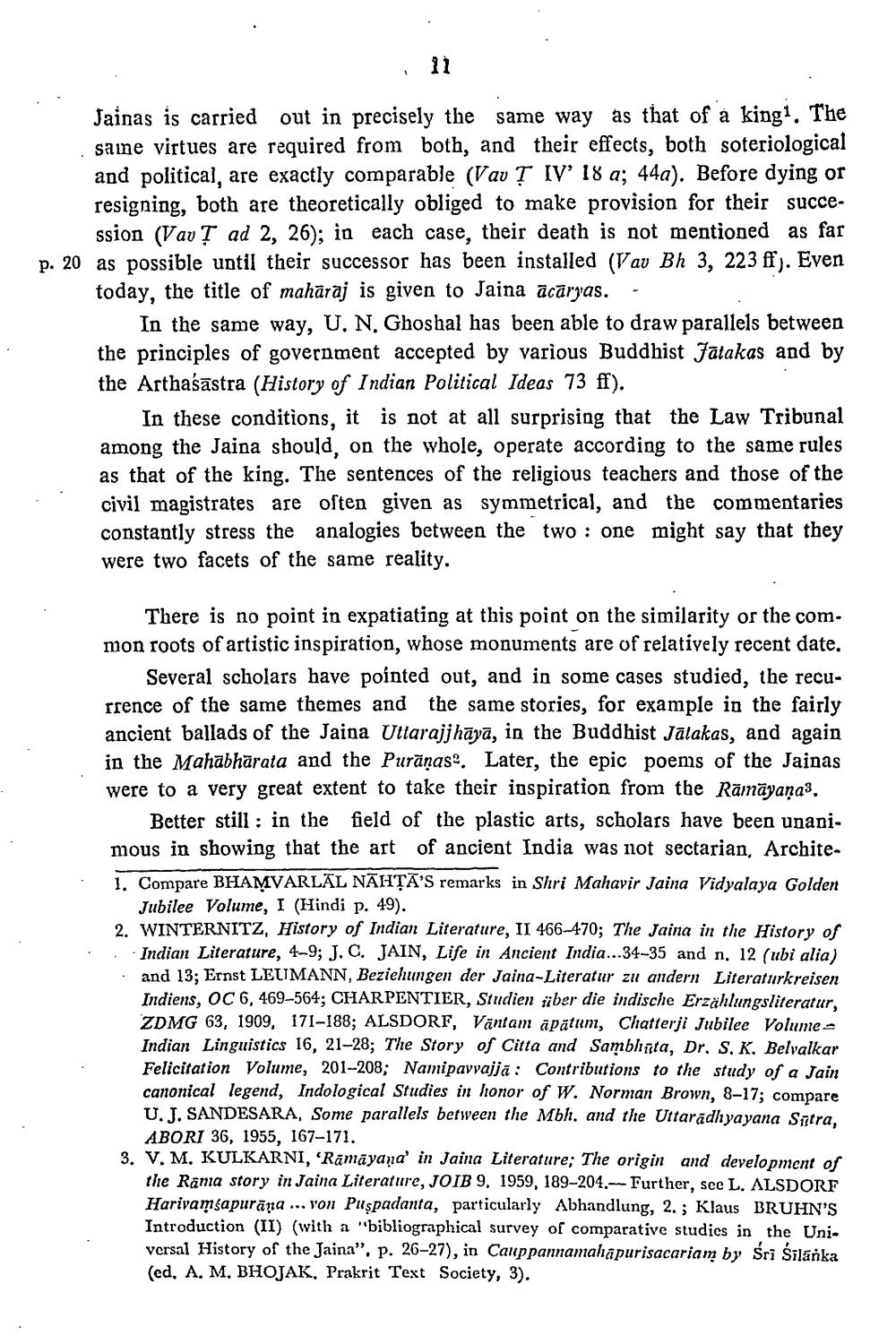________________
Jainas is carried out in precisely the same way as that of a kingi. The saine virtues are required from both, and their effects, both soteriological and political, are exactly comparable (Vav Ţ IV 18 a; 44a). Before dying or resigning, both are theoretically obliged to make provision for their succe
ssion (Vav Ț ad 2, 26); in each case, their death is not mentioned as far p. 20 as possible until their successor has been installed (Vav Bh 3, 223 ff). Even today, the title of mahāraj is given to Jaina ācāryas.
In the same way, U. N. Ghoshal has been able to draw parallels between the principles of government accepted by various Buddhist Jatakas and by the Arthaśāstra (History of Indian Political Ideas 73 ff).
In these conditions, it is not at all surprising that the Law Tribunal among the Jaina should, on the whole, operate according to the same rules as that of the king. The sentences of the religious teachers and those of the civil magistrates are often given as symmetrical, and the commentaries constantly stress the analogies between the two : one might say that they were two facets of the same reality.
There is no point in expatiating at this point on the similarity or the common roots of artistic inspiration, whose monuments are of relatively recent date.
Several scholars have pointed out, and in some cases studied, the recurrence of the same themes and the same stories, for example in the fairly ancient ballads of the Jaina Ullarajjhāyā, in the Buddhist Jalakas, and again in the Mahabharata and the Purāņas. Later, the epic poems of the Jainas were to a very great extent to take their inspiration from the Rāmāyana3.
Better still : in the field of the plastic arts, scholars have been unani. mous in showing that the art of ancient India was not sectarian, Archite
.
1. Compare BHAMVARLAL NAHTA'S remarks in Shri Mahavir Jaina Vidyalaya Golden
Jubilee Volume, I (Hindi p. 49). 2. WINTERNITZ, History of Indian Literature, II 466-470; The Jaina in the History of .. Indian Literature, 4-9; J. C. JAIN, Life in Ancient India...34-35 and n. 12 (ubi alia) · and 13; Ernst LEUMANN, Beziehungen der Jaina-Literatur zu andern Literaturkreisen
Indiens, OC 6, 469-564; CHARPENTIER, Studien über die indische Erzählungsliteratur, ZDMG 63, 1909, 171-188; ALSDORF, Väntam apātum, Chatterji Jubilee Volume - Indian Linguistics 16, 21-28; The Story of Citta and Sambhata, Dr. S. K. Belvalkar Felicitation Volume, 201-208; Namipavvajjā : Contributions to the study of a Jain canonical legend, Indological Studies in honor of W. Norman Brown, 8-17; compare U. I. SANDESARA, Some parallels between the Mbl, and the Uttarādlıyayana Sitra,
ABORI 36, 1955, 167-171. 3. V. M. KULKARNI, Rāmāyana' in Jaina Literature; The origin and development of
the Rama story in Jaina Literature, JOIB 9. 1959, 189-204.-- Further, see L. ALSDORF Harivamsapurāna ... von Pulspadanta, particularly Abhandlung, 2.; Klaus BRUHN'S Introduction (II) (with a "bibliographical survey of comparative studies in the Universal History of the Jaina", p. 26-27), in Canppannamahapurisacariam by Śri silanka (ed. A. M. BHOJAK, Prakrit Text Society, 3).




